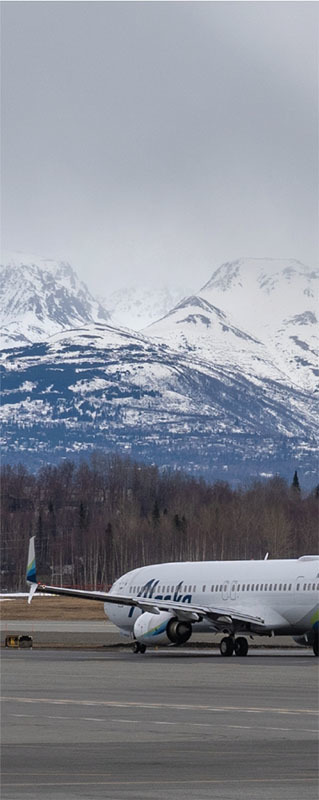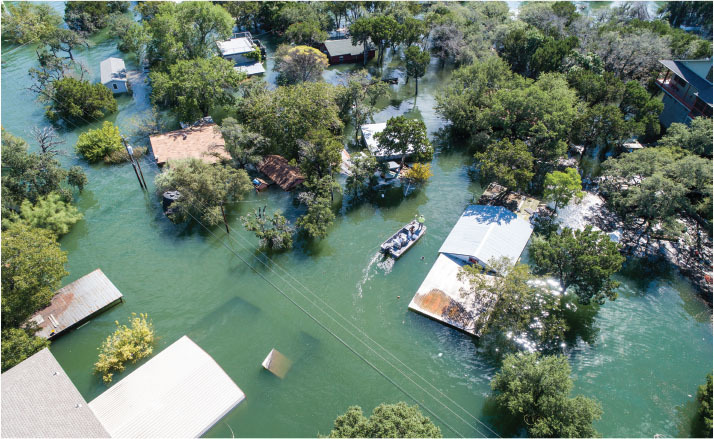December 2013
CONCEPTS
Sprawlburbia: The American Dream?
BY DAVID S. THALER, P.E., F.NSPE
 Traveling the I-95 corridor up and down the East Coast is not a pretty sight. Post-Second-World-War development, not just on the East Coast, but across the country is surprisingly similar: sprawling, spread out, sterile, car-dominated, and just plain ugly.
Traveling the I-95 corridor up and down the East Coast is not a pretty sight. Post-Second-World-War development, not just on the East Coast, but across the country is surprisingly similar: sprawling, spread out, sterile, car-dominated, and just plain ugly.
It was not always so. Prior to 1950, America was largely a collection of towns, each with a coherent form surrounded by rural areas. Now, there is no overall structure, no core, no linkage between the pieces and no common fabric of development. The Northeast corridor has become an unintended town, but one without any apparent design. Somehow after the war, traditional American town planning morphed into the sprawling, pedestrian-unfriendly, car-dominated suburbs we have today—and this was no accident, but the result of manifest public policy.
But first, what after all is so wrong with sprawl, other than it chews up the countryside and puts unsustainable burdens on public services? What is so wrong about a subdivision with a nice golf course, a beautiful home, a gatehouse, wide streets, a big lot, and plenty of room onsite for our kids and many cars? First of all, architectural shortcomings aside, these places are dismal because the public realm that binds them together is degraded, incoherent, and meaningless.
But, perhaps the most damning case against sprawl is that it actually creates more traffic. It is a wonder that such gridlock can be created from low-density zoning and development. It’s because the farther things are spread out from each other, the more everyone must drive.
Sprawl is a result of many factors: relatively cheap gas, the mortgage deduction, and federal highway subsidies. But there are two elements of the public discourse in which the engineering profession can be especially influential: road codes, sometimes called public works standards, which dictate the design of roads and highways, and the use of Euclidean zoning, a tool designed to control high-rise construction in lower Manhattan nearly a century ago.
New roads are justified to relieve congestion. However, you cannot spend your way out of traffic problems. There are a number of paradoxes about land use. One is that new roads don’t relieve congestion, they create it. To paraphrase Field of Dreams, “If you build them, they will come.”
It is impossible to build enough roads to alleviate congestion for two reasons: First, it’s simply too expensive. Four extra lanes on I-270 in Maryland between Gaithersburg and Frederick are anticipated to cost $4.6 billion—a stupendous amount that will drain funds from all other Maryland transportation projects.
Second, while new highways are justified as a way to reduce congestion, they actually increase it. When I-270 is widened to Frederick, it will initially reduce commuting times but that will actually generate development further out, causing congestion to inexorably grow again.
One of the main causes of the way in which suburbs look is the concept of segregation of uses. In the U.S. Supreme Court’s landmark case Village of Euclid v. Ambler Realty Co., 272 U.S. 365 (1926), which, as every first-year law student knows, the Court for the first time upheld zoning as a constitutional exercise of the police power and not a compensable taking. But buried in that decision was a powerful and more insidious concept—the notion that uses should be segregated and, of course, the more segregated the elements of daily life, the more each of us must drive.
Another paradox of our current development model is that the most desirable areas—Annapolis, Maryland; Leesburg, Virginia; and Alexandria, Virginia; for example—where the property values are the highest and where people most want to live, could not be built today. Their form of development is prohibited by a mountain of zoning and other regulation. Yet these older areas provide a human-scaled, mixed-use environment where human activities are considered as much in design as vehicular ones.
Another great culprit, whose influence is not well appreciated, is modern road codes, which create a hierarchy of streets: cul-de-sac, local, minor collector, and major collector. This hierarchy, which limits interconnections, acts like a traffic funnel and leads to congestion and gridlock.
Another element missing in modern design is that the streets and buildings are designed independently. In more traditional communities they are designed together. The buildings create an architectural facade that has a relationship to the street, with parallel parking, street trees, and sidewalks creating a pedestrian-friendly environment. The facade creates a sense of structure—almost an outdoor room.
So, we need public policies that at least permit narrower roads, mixed uses, parallel parking, and human-scaled environments but most importantly, communities actually worth caring about. It is the engineering profession that should lead the way.
David S. Thaler, P.E., F.NSPE, is president of D.S. Thaler & Associates Inc., a civil and environmental engineering firm in Baltimore. He is a Fellow of ASCE and a licensed surveyor.
The views expressed are those of the author and not necessarily those of NSPE.


 Volunteering at NSPE is a great opportunity to grow your professional network and connect with other leaders in the field.
Volunteering at NSPE is a great opportunity to grow your professional network and connect with other leaders in the field. The National Society of Professional Engineers (NSPE) encourages you to explore the resources to cast your vote on election day:
The National Society of Professional Engineers (NSPE) encourages you to explore the resources to cast your vote on election day:



